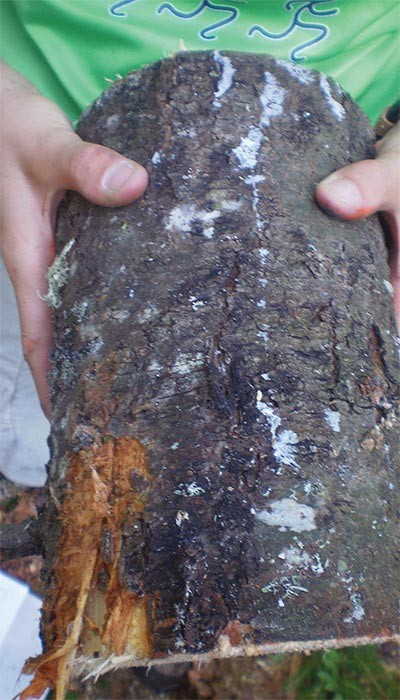A native fungal pathogen that was once considered relatively harmless has become increasingly damaging to eastern white pines since the late 1990s, and stressed, weakened trees appear to be the most vulnerable. Researchers from the University of Maine reported that serious damage caused by the pathogen Caliciopsis pinea, which was first noticed in central New Hampshire, is now having a noticeable effect on New England’s forest products industry.
William Livingston, associate director of the University of Maine School of Forest Resources, and doctoral student Kara Costanza have been studying how the pathogen affects trees and how severely the trees are impacted. They have also attempted to quantify the damage. After processing 60 white pines from southern New Hampshire and southwestern Maine for lumber, they found that 48 percent were infected with Caliciopsis, and it resulted in a lower grade and value in about 13 percent of the lumber.
By correlating the presence of Caliciopsis cankers with the year when the infections occurred, the researchers determined that climate extremes like drought or significant precipitation events predispose trees to increased damage. They said the pathogen causes more damage to trees growing in extremely dense stands or in poor soil.
“Dry summers are definitely associated with a lot of canker initiation,” Livingston said. “At one site where we found the worst cankers, it wasn’t drought but when a hurricane came through that corresponded with the onset. Whatever adversely affects the roots seems to do it.”
Trees with Caliciopsis show considerable stem damage as the fungus works its way into the bark and kills the cambium.
“White pines produce a resin in reaction to the pathogen, indicating something is killing the tissue inside the tree,” explained Livingston. “We’re finding the fungus is associated with the resin.” A US Forest Service survey of white pines in New Hampshire found that 70 percent of stands showed signs of the resin.
A small insect called the white pine bast scale (Matsucoccus macrocicatrices) has also been implicated. It feeds on tree stems, which may give the fungus access into the trees.
To avoid tree damage from the pathogen, the researchers recommend low-density management of white pines. Wider spacing of trees appears to reduce the risk of fungal damage.
“This is not a threat to the supply of white pine, but if you don’t manage your stands, you’re going to have less wood and lesser-quality stands,” Livingston said. “The more the stands can be managed, the less risk you’ll have of damage during dry years or when other stresses hit the trees. Thinning may not stop the fungus, but it definitely decreases the size of the canker.”
The researchers plan to continue monitoring tree damage to see whether managed stands have fewer problems associated with the pathogen. “We’ve gone through a couple of dry summers, so, according to our hypothesis, we should see an uptick of problems,” concluded Livingston. “Our next step is to see if, as we get more extremes in climate, these problems with white pines are going to increase.”


